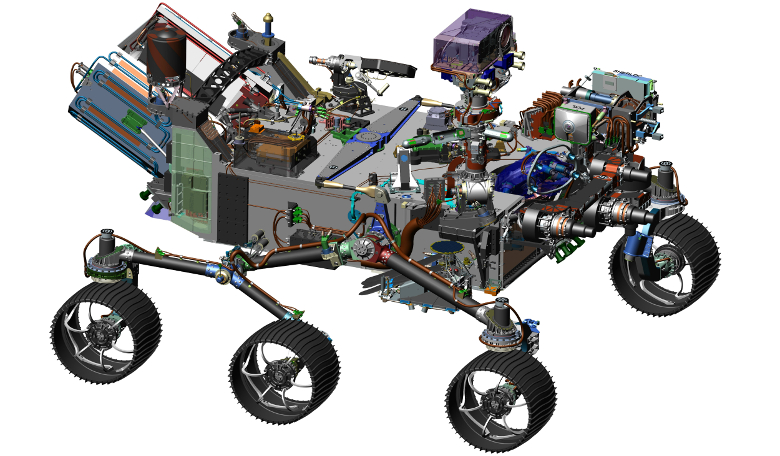NASA unveils the successor to its Mars Curiosity rover, as it prepares to send another to the Red Planet in 2020. Aptly named, at this stage in development, Mars 2020 Rover, the roaming laboratory will follow in the treadmarks of its predecessor by investigating a region of Mars where the ancient environment may have been favourable for microbial life.
The rover, currently targeted to launch in summer of 2020 for arrival on the Red Planet in February 2021, will collect samples of rock and soil, and store them on the surface for potential return to Earth by a future mission.
"The Mars 2020 rover is the first step in a potential multi-mission campaign to return carefully selected and sealed samples of Martian rocks and soil to Earth," said Geoffrey Yoder, acting associate administrator of NASA's Science Mission Directorate in Washington. "This mission marks a significant milestone in NASA's Journey to Mars to determine whether life has ever existed on Mars, and to advance our goal of sending humans to the Red Planet."
Although Mars 2020 will look similar to Curiosity with its six wheels and one-tonne bulk, it will have on board an array of new science instruments, designed to probe the planet like never before. Enhancements to the instruments include an entirely new subsystem to collect and prepare Martian soil and rock samples, one to help determine where to collect samples by analysing the chemical, mineral, physical and organic characteristics of Martian rocks, while another will help to search for signs of past life.
In addition the mast and deck get an upgrade by fitting both a suite of sensors to monitor weather conditions and the dust environment and science instruments to provide high-resolution imaging and three types of spectroscopy for characterising rocks and soil from a distance. If that wasn’t enough then a ground-penetrating radar will assess sub-surface geologic structure.
The sky crane landing system currently used on Curiosity will also get a make over for the Mars 2020 rover giving it the ability to not only land in more challenging terrain but to choose whether it wants to land in that area in the first place. "As it is descending, the spacecraft can tell whether it is headed for one of the unsafe zones and divert to safe ground nearby," said Allen Chen, Mars 2020 entry, descent and landing lead at NASA's Jet Propulsion Laboratory in Pasadena, California. "With this capability, we can now consider landing areas with unsafe zones that previously would have disqualified the whole area. Also, we can land closer to a specific science destination, for less driving after landing."
If you thought the science team had thought of everything, then a couple of additional attachments will show that they probably have. To capture sounds and imagery of the entry, descent and landing sequence of the rover dropping to the Red Planet, Mars 2020 will be equipped with a suite of cameras and a microphone. Microphones have been used on previous missions to Mars, but have never actually been used on the surface of the Red Planet.
"This will be a great opportunity for the public to hear the sounds of Mars for the first time, and it could also provide useful engineering information," said Mars 2020 Deputy Project Manager Matt Wallace of JPL.











